Tag: primary sources
Resources from the Center for Research Libraries

The UC Berkeley Library is a member of the Center for Research Libraries (CRL), a partnership of more than 200 university, college, and independent research libraries. CRL acquires and preserves newspapers, journals, government documents, archives, and other primary source materials from a global network of sources, making them available to researchers through interlibrary loan and digital delivery.
CRL’s deep and diverse holdings support research in the history of science, economics, law and government, immigration and population studies, international diplomacy, and cultural studies.
- Largest collection of circulating newspapers in North America (more than 16,000 titles with strengths in various global areas and historical U.S. ethnic titles)
- Primary legal and government resources, including foreign and U.S. state documents
- Over 800,00 foreign dissertations (mostly from European institutions) dating back to the 1800s
- Area studies materials—major microform and paper collections from Africa, Latin America, Eastern Europe, the Middle East, South Asia, and Southeast Asia
CRL functions as a branch library of extraordinary resources with user-focused services.
- Rapid turnaround of loan requests and project-length loan privileges from CRL’s five million items
- Digitized collections offering over 50 million pages scanned by request or in partnerships
- Document delivery of articles from the Linda Hall Library of Science, Engineering, and Technology
- Demand purchase of new materials in three areas of collection strength: foreign dissertations, newspapers, and microform archives
For more information on CRL collections: CRL’s online catalog (holdings are also listed in WorldCat and in some cases in OskiCat)
For more information about the CRL: please contact Liladhar R. Pendse
(Lpendse (at) library.berkeley.edu), UCB Library coordinator for the CRL.
Here Today, Gone Tomorrow? The Value in Collecting Social Movement Ephemera
While surveying the Mark Evanoff papers recently during archival processing, it soon became clear that this collection includes a particularly rich array of social movement cultural ephemera about the regional and global environmental impact of the nuclear industry in California. Social movement ephemera is produced in a variety of formats to engage, transform and promote direct action toward a dynamic social cause. The content provides a unique glimpse into a time and place in the life of a socio-political movement and so can be of particular historical importance and value in research and instruction when available.
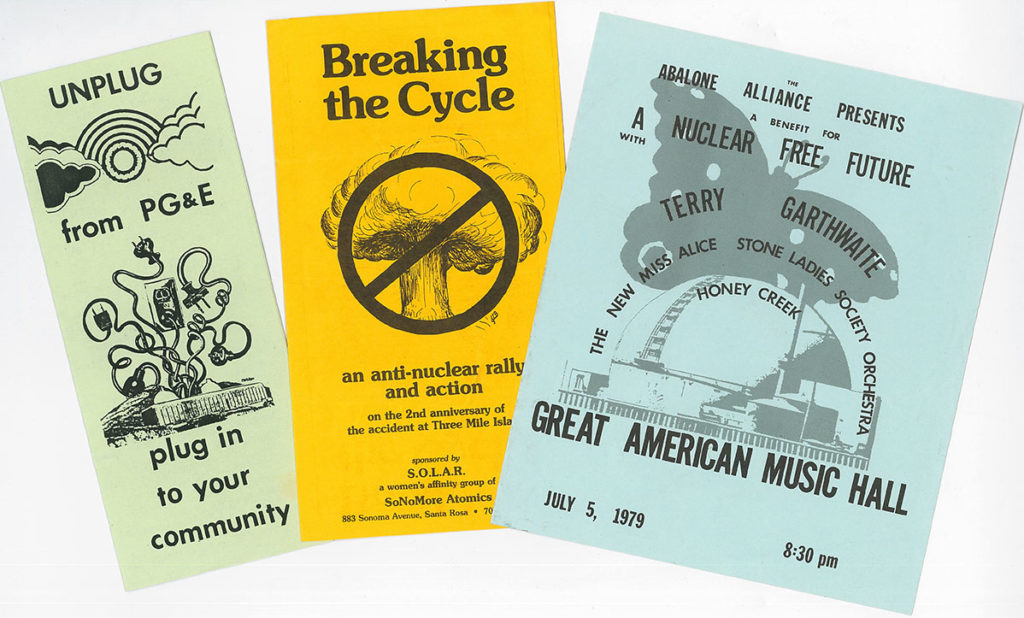
As objects of a temporary nature, ephemera is always at risk of disappearing once its initial purpose has been served. Accordingly, it usually must be saved by a participant or observer around the time of its creation. This is the case with the Mark Evanoff papers. Evanoff worked primarily with the Abalone Alliance and Friends of the Earth during the 1970s and 1980s to oppose the development and operation of nuclear power plants in Diablo Canyon and Humboldt Bay. He wrote articles for Friends of the Earth’s “Not Man Apart” publication, planned and participated in protest actions (and was arrested twice in the Diablo Canyon blockades), mobilized activists and prepared groups for non-violent civil disobedience training and legal defense.

Evanoff also collected and disseminated educational resources about nuclear power and disarmament produced by local and global pro-nuclear and anti-nuclear groups. The Evanoff papers provide substantial evidence of the anti-nuclear movement, community organizing, direct action and social movement participation at a grassroots level during this period through the correspondence, organizing notes, meeting minutes, legal testimony, public policy clippings, and ephemera contained within the collection.

Since adapting to communication trends is crucial in the progress of social movements, the choices made regarding the information, language, graphic design, artwork, printing and distribution of ephemera produced by these groups can profoundly affect the message. With just a few images and well positioned text, effective social movement ephemera opens minds, pulls at the heart-strings, and/or gets the viewer’s blood boiling and ready for action. It acts as a useful educational and marketing outreach tool to share information, promote ideas, publicize an agenda and provide talking points about a cause. Activist ephemera also usually presents logistical details as to the who, what, when, why, where and how of community organizing, grassroots public policy lobbying, protest marches, fund raising concerts and other actions.

Ephemera is most powerful when designed with eye catching, bold, trending or symbolic imagery, visual cues and creative use of text, colors and fonts. Many flier, poster and zine designs have a cut and paste, DIY (Do-It-Yourself) quality: utilizing photographs overlaid with other compelling graphics and text, including well-known historical quotes or humorous catchphrases, and self-published at home or printed at copy stores. While some other ephemera is professionally graphic-designed and printed on finer quality papers.

Although some materials are undated and may contain questionably reliable content, requiring additional sleuthing to fact check information and find accurate dates, much cultural ephemera can provide valuable incite to researchers long after the date of creation. Social movement ephemera may also act as a jumping off point for scholarly research when used in exhibitions, publications and instruction. The visual aspects and originality of content of this sort of cultural ephemera has the ability to draw a viewer in to study a topic they otherwise may not have known or thought much about previously.

Some of the qualities that make activist ephemera unique can also become challenges when preserving a collection of archival materials. Certain items may be difficult to stabilize and store long-term in their entirety when produced on acidic paper, fabric, metal, plastic or wood; or when they are found adhered to the pages of scrapbooks or attached to handles. There may also be questions as to how best to organize and catalog ephemera materials within a large collection, so that a potential researcher will be able to readily find relevant items. To highlight the research value of the ephemera in the Evanoff papers, it has been arranged so that anti-nuclear materials are separated for the most part from power plant information and nuclear power subject and technical files, and it has been described within the finding aid in a bit more detail than usual.
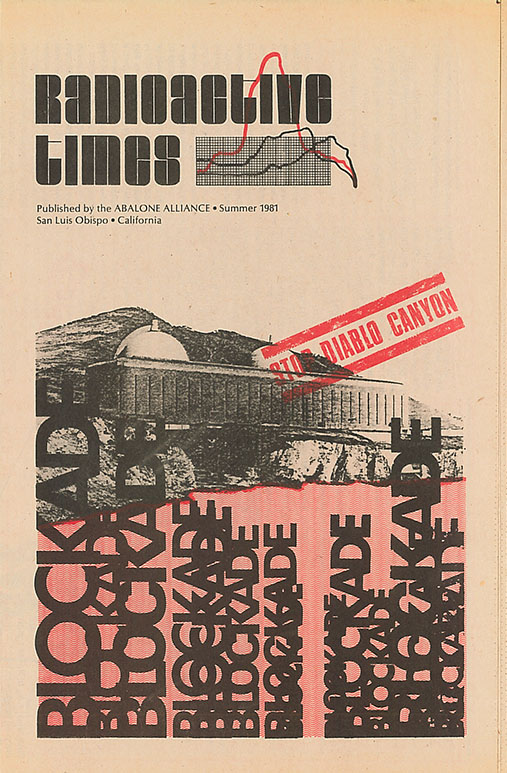
After nearly 60 years of controversy since construction began on the Diablo Canyon Power Plant, PG&E announced plans for its closure in 2025. While it’s impossible to measure the effect that the activist ephemera produced by the Abalone Alliance and other anti-nuclear groups had on this result, it is easy to see the informational, evidential and aesthetic value in keeping these social movement materials for future researchers. What is important to the historians of tomorrow must be collected and saved today.
The Mark Evanoff papers are now processed and open to researchers at The Bancroft Library.
Primary Sources: Brazilian Government Documents digitized by CRL
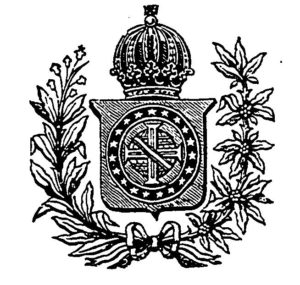 This is the first of a series of posts featuring digitized collections available through the Center for Research Libraries (CRL).
This is the first of a series of posts featuring digitized collections available through the Center for Research Libraries (CRL).
In 2000, CRL, working with the Biblioteca Nacional do Rio de Janeiro, completed digitizing over 670,000 Brazilian government documents selected because of their scarcity, importance, and volume. It is not possible to search these collections; access points are described below.
Provincial Presidential Reports (1830–1930)
These state-level messages, issued annually, summarize activities within each province. Access is by province and year, while subject access to selected quantitative information is provided through the Subject Guide to Statistics in the Presidential Reports of the Brazilian Provinces, 1830–89 compiled by Ann Hartness.
Presidential Messages (1889–93)
The President’s annual message has summarized executive branch activities since Brazil became a republic in 1889. These documents are accessible by year and, where available, by the message’s table of contents.
Almanak Laemmert (1844–89)
The Almanak, published annually, reported on the Brazilian Royal Court. It listed officials of the Court and its Ministries. Also included were sections on provincial officials for Rio de Janeiro and a supplement including a variety of information such as legislation, census data, and commerical advertising.
Ministerial Reports (1821–1960)
Each federal ministry issues an annual report that recounts its activities. Access is by ministry, year, and table of contents (where available).
Primary Sources: Meet the Press
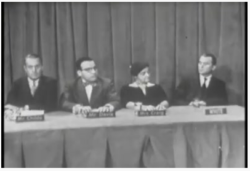 Explore over 1500 hours of streaming media footage from Meet the Press, from its premiere in 1947 to 2013. Search the collection or browse by timeline, subject, people, places discussed, historical events, or organizations.
Explore over 1500 hours of streaming media footage from Meet the Press, from its premiere in 1947 to 2013. Search the collection or browse by timeline, subject, people, places discussed, historical events, or organizations.
Transcriptions accompany the episodes and close-captioning is available. Links and embed codes allow you to easily include content within bCourses and a clipping feature is available if you create a (free) account on the site.

What’s In a Name? How One Bancroft Library Archivist Shed Light on a Gold Rush Era Gem

Background: Each year the Bancroft Library acquires a sizeable amount of new manuscript material. The sheer quantity of this material necessitates that the archivists who handle, process, and catalog these materials, exercise considerable judgment in balancing thorough and accurate descriptions that facilitate access with the need to make the materials available as quickly as possible. Archivists are trained to determine just the right level of description to allow for sufficient discovery. In the case of very large collections, an archivist rarely describes materials at the item-level.
But sometimes a single item merits closer examination and considerable research to render it truly accessible to the library’s researchers. One such item recently caught my attention–
The “Ship Capitol’s Log Book” is the account of a passenger aboard one of the first ships to head to California during the gold rush, arriving in San Francisco in July 1849.
At first glance, it looked like a typical gold rush era journal, with daily entries describing conditions and life aboard the ship as it made its way from Boston to San Francisco around Cape Horn. But this one stood out because it included several finely rendered pencil drawings throughout including ships, shorelines, and even an albatross at rest.
Unlike similar journals that have crossed my desk, this one came with a contemporary inscription inside the front cover identifying the ship and giving the date (and, incidentally, providing a neat title for the catalog record). The accompanying description provided by the vendor was also intriguing, noting that there was an additional inscription in a different hand: “Above this [title] is the inscription of Paul Maraspin, another passenger on the ship and the ancestor of the log’s most recent owner…. It is not clear who authored the journal.” However, upon closer examination, I determined that this might not be the case. It was clearly two initials followed by “Maraspin” but it didn’t look like either a “P” or “Paul.” I could not clearly make out the first initial, but the second one looked like an “L,” and below that a street address of “17 Court Street, Boston” and the date “Feb. 1917.”
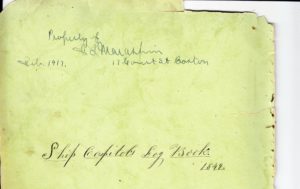
The vendor also noted that the lettering of the captions of the drawings was in a third hand, suggesting that someone other than the author of the journal might be the source of those. Also noted was the composer of several songs recorded in the journal, B.F. Whittemore.
The clues from the vendor and my own initial assessment of the journal suggested that a bit more research might make the journal infinitely more discoverable and useful. I became intrigued by the name of the owner of the journal, and the information suggested by the vendor just didn’t seem to fit with the facts the artifact was presenting to me.
Archivists have at their disposal the same research tools many other people do…the internet and access to genealogical sites that hold various records. There is a tremendous amount of information out there that makes this kind of research much more efficient than it used to be. Of course, too much information can also be problematic and it is the skillful researcher who can quickly sort through large amounts information and surmise whether more research will yield tangible results or, lacking that, have to call the effort “good enough.”
In this particular case, I discovered information about the owner’s signature that led to the solution of numerous puzzles presented by the journal itself, including how he came into possession of it, its likely author, the identity of the illustrator, the history of the lyricist of several songs, the author of the final song in the journal, and the history of the ship and its captain, Thorndike Procter.
Because Maraspin struck me as an unusual name, my first step was a Google search on the name. This resulted in the discovery of a Maraspin Creek in Barnstable, Massachusetts. Assuming the creek was named after a prominent family in the area, the information gave me hope that I could find out more about them and explore those connections.
I switched over to Ancestry.com to do a direct search on Paul Maraspin from Barnstable, Massachusetts around the time period of 1849. Numerous records surfaced that indicated a Paul Maraspin from Barnstable had been married and had several daughters, but none of whose initials matched the inscription in the journal. But then I found an application to the Sons of the American Revolution from 1937 for Paul Maraspin that listed his wife, Mary Eliza Davis, and one child, a son, Francis Lothrop Maraspin. Paul Maraspin had this son rather late in life, at the age of 52, and some 16 years after he had sailed to California. Looking back at the inscription, I could see now that the autograph was, in fact, “F.L. Maraspin.”
I then turned to confirming that this was, indeed, the Francis Lothrop Maraspin in the application form. Back to Google, I found an article from the Cape Cod Times lauding a Francis Maraspin’s 100th birthday in 1966. Back to Ancestry.com I found another Sons of the American Revolution application from 1935, this time for a Francis Lothrop Maraspin. I could see print coming through from the backside of the page and paged forward to see it. Right at the top was the statement identifying Paul Maraspin as his father. But the real clincher was at the bottom.The application was signed by Francis Lothrop Maraspin himself with his typed address, 17 Court Street, Boston.
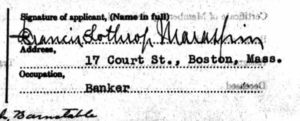
And from the journal again:

As you can see, the signature and address matched the inscription on the journal cover perfectly and we now knew we had our owner and could assume, with reasonable certainty, that the likely author of the journal was Francis Lothrop’s father, Paul Maraspin.
I shared these initial findings with my supervisor, Randal Brandt, who directed me to a publication that would be key to figuring out the rest of the puzzles. The Argonauts of California, published by C.W. Haskins in 1890, is an invaluable source of information about the gold seekers who came to California. The passenger lists it contains were crucial in figuring out the names of people associated with the journal. We now knew who had written the journal but who had done the drawings? And what about the composer of those numerous songs recorded in the journal? A closer examination of the drawings proved fruitful. Of the nine drawings, two of them had the initials “CCH” in the lower right hand corner.

A quick perusal of the Capitol’s passenger list turned up only one possible match, a C.C. Hosmer. Now we knew the name of the illustrator. Back to Ancestry.com again, I went hunting for more information about him and found out his full name, Chester Cooley Hosmer (1823-1879). Because Chester Cooley Hosmer is also an unusual name, on a whim I Googled it along with the word “Capitol.” The very first result was a library catalog listing in the Special Collections of the Jones Library in Amherst, Massachusetts for Chester Cooley Hosmer’s journal documenting the same trip aboard the Capitol. Describing it as a journal “illustrated throughout with his drawings,” the catalog listing included scans of two pages with drawings. Here is one of them.

One can readily see the style of these drawings match those in the Maraspin journal. Not only did we now know our illustrator but also the location of his journal from the very same voyage.
Turning to the name listed as the songwriter, B.F. Whittemore (sometimes spelled incorrectly as “Whitmore” in passenger lists), a search turned up another interesting character. The Wikipedia entry for Benjamin Franklin Whittemore states that he went on to become a minister in the Union Army and then elected to the state legislature of South Carolina and eventually the House of Representatives.
Others identified in this process included the composer of the final song lyrics in the journal titled, “A Song Dedicated to the Officers of the Ship Capitol,” and signed “W.T. old friend.” Again, the passenger lists were the key as only one person had those initials, W.T. Hubbard.
More research on the ship and lists revealed the full name of the captain, Thorndike Procter of Salem, Massachusetts.
As might be true with any group of persons traveling so far from home for so long, there is inevitable tragedy as well as triumph. Captain Thorndike Procter committed suicide in San Francisco Bay on October 17, 1849. It was reported in the papers that the captain “had been lately subject to occasional fits of derangement, during the last of which he jumped overboard, and was drowned….” Nine weeks later, Paul Maraspin’s young “old friend,” William.T. Hubbard, just 23 years of age, also died by drowning in San Francisco Bay on Christmas Eve.
The work of improving access and discoverability to our collections is at the heart of what we do as library professionals. Unknown people become known, their stories and lives become real to us, and as you read this journal now you can see the intertwining of their lives. One hundred and sixty-eight years later, two journals from the same trip are virtually reunited because of the work of archivists and catalogers separated by time and a continent. In this way, library professionals contribute to a very large cultural jigsaw puzzle that, slowly but surely, becomes ever more complete.
To see the completed catalog record for this item please use this link:
http://oskicat.berkeley.edu/record=b23750637~S1
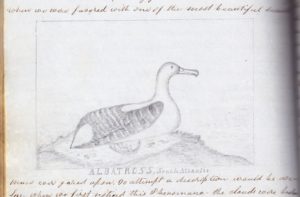
On View Now: The Summer of Love, from the Collections of The Bancroft Library
Marking the 50th anniversary of the Summer of Love, an exhibit in the corridor between Doe Library and The Bancroft Library features Bancroft’s rare and unique collections documenting the world-famous Bay Area counterculture of 1967.
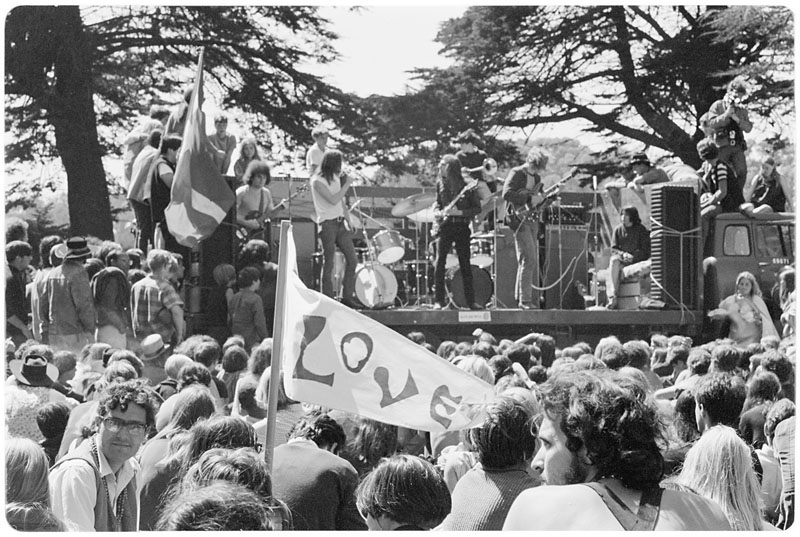
![A young hippie woman with feathers that look like antlers, in day glow face paint, Avalon Ballroom, 1967] Ted Streshinsky, photographer.](https://update.lib.berkeley.edu/wp-content/uploads/2017/07/cubanc00002896_pm_a_ih.jpg)
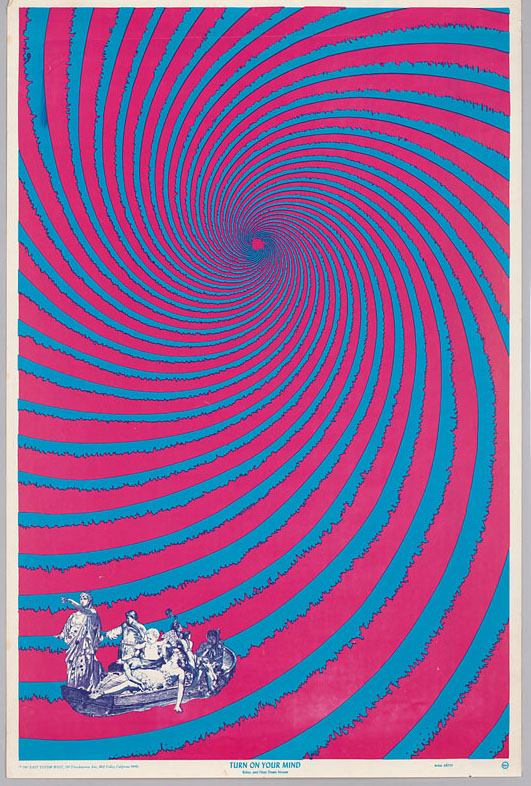
This exhibit, prepared by Chris McDonald and James Eason of the Bancroft Library Pictorial Unit will be on view through Fall 2017.
The hidden treasures in Italian Libraries

David Laskin’s article in yesterday’s New York Times gave a delectable overview of some of Italy’s historical libraries as not only keepers of intellectual treasures but as physical spaces to carry out research. While web portals such as Europeana or Internet Culturale are bringing us closer to Europe’s rare books and primary resources, conducting archival research in renaissance libraries such as the Biblioteca Nazionale Marciana in Venice, the Biblioteca Vallicelliana in Rome, or the Biblioteca Medicea Laurenziana designed by Michelangelo in Florence will never be completely replicated online.
UC Berkeley may not have paintings by Titian or Veronese decorating its reading rooms, but it is home to one of the most significant Italian collections on the West Coast with medieval manuscripts, incunabula, and early modern works in The Bancroft Library, and an extraordinary collection of 19th and 20th century Italian books and journal runs in the Main Stacks. The Library collects in all divisions of Italian history and literature, from the medieval and renaissance periods to the present. For the 20th and 21st centuries, the collection tends to focus more heavily on new literature(s), literary and cultural theory, cinema, historiography, Italian colonial presence in Africa, national and regional identity politics, and comparative studies with other Romance traditions. The Art History/Classics Library in Doe, the Hargrove Music Library, and the Environmental Design Library are all places on campus where the Italian collection continues to thrive.
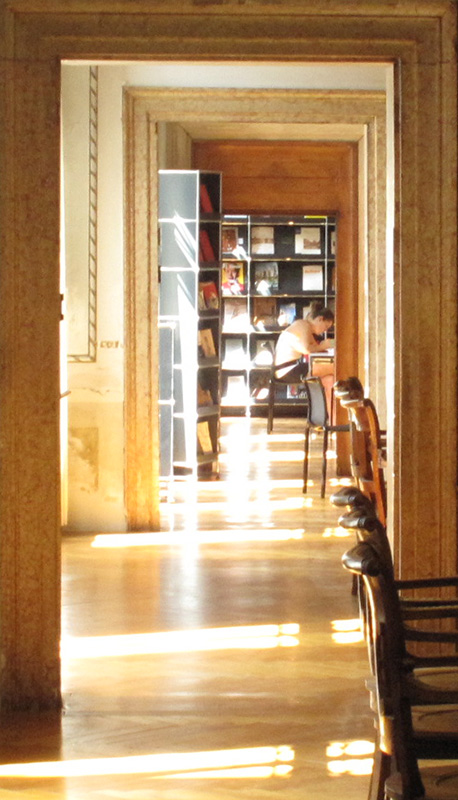
Primary Sources: Women’s Magazine Archive
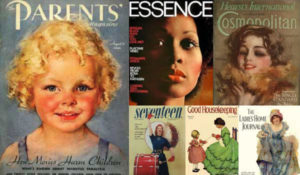 A recent acquisition is Proquest’s Women’s Magazine Archive, a searchable archive of women’s interest magazines, dating from the 19th century. It provides access to the complete archives (with some exceptions) of Good Housekeeping (1885-2005), Ladies’ Home Journal (1885-2005), and Woman’s Day (1937-2005). Other titles include:
A recent acquisition is Proquest’s Women’s Magazine Archive, a searchable archive of women’s interest magazines, dating from the 19th century. It provides access to the complete archives (with some exceptions) of Good Housekeeping (1885-2005), Ladies’ Home Journal (1885-2005), and Woman’s Day (1937-2005). Other titles include:
Better Homes and Gardens 1925-1978
Chatelaine 1928-2005
Cosmopolitan 1965-1993
Essence 1970-2000
Parents 1949-2005
Redbook 1903-2005
Seventeen 1970-2005
Women’s International Network News 1975-1985
Additional content will be added by September 2017.
Primary Sources: East India Company Archives
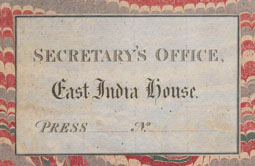 The Library has acquired from Adam Matthew Digital their collection of East India Company records, which will be published in three modules. The module available now, “Trade, Government and Empire, 1600-1947” includes 932 volumes of the British Government’s India Office Records (IOR):
The Library has acquired from Adam Matthew Digital their collection of East India Company records, which will be published in three modules. The module available now, “Trade, Government and Empire, 1600-1947” includes 932 volumes of the British Government’s India Office Records (IOR):
IOR/A: The East India Company’s charters, statutes and treaties
IOR/B: The minutes of the meetings of the Courts of Directors and Proprietors
IOR/C: The minutes and memoranda of the Council of India
IOR/D: The minutes and memoranda of the general committees and offices of the East India Company
IOR/Z: Indexes to selected documents in classes B and D
These records include minutes of council meetings, memoranda and papers laid before the councils, council resolutions, charters, text of legislation, correspondence, personnel lists, and printed monographs. The Nature and Scope section of the resource provides more details.
Primary Sources: Food Studies Online
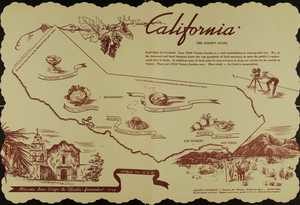 Food Studies Online brings together archival content, visual ephemera, monographs, and videos that explore the important role of food and food systems. Key primary source collections are:
Food Studies Online brings together archival content, visual ephemera, monographs, and videos that explore the important role of food and food systems. Key primary source collections are:
National Archives – Records related to the school lunch program 1940-1973 – Government documents related to the US school lunch program in the mid-20th century, including recipes used in school cafeterias, pamphlets about ending hunger in schools, and educational pamphlets on how to create healthful school lunches. Also includes factbooks with statistics of the national school lunch program in the 1950s.
National Archives – WWII Food Campaign Files, 1941-1948 – Documents, pamphlets and posters from the government’s food campaigns during WWII, including the rationing campaign “No Point-Low Point,” Food Fight for Freedom Campaign, Fat Salvage Campaign and Victory Garden Campaign. Full color posters show how campaigns were advertised. Includes packets of instructional materials for housewives who want to hold their own cottage meetings on conserving food during the war.
Food Ephemera Collection – Over 5,000 pages of ephemeral materials from the turn of the century through the 1960s. The collection is made up of educational pamphlets from food production companies as well as food labels, food advertisements, and recipe books. Brands include Jello, Quaker Oats, Libby, Kellogg, and more. These materials give insight into history of food and gender roles, foodways, food trends, food geography, and food and race.
